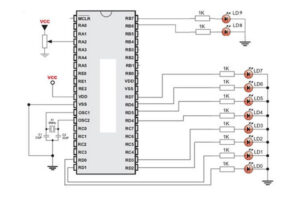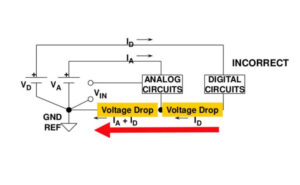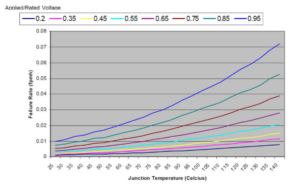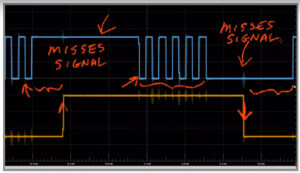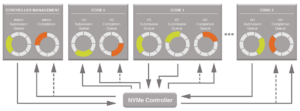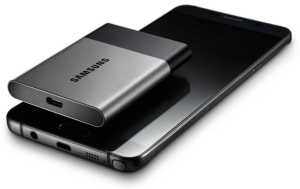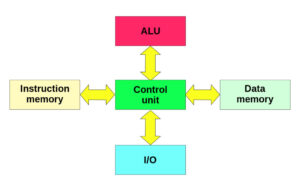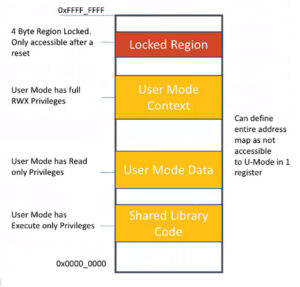There are sensors for a plethora of smart applications that can measure a wide range of parameters (e.g., temperature, light, acceleration, pressure, proximity, etc.). The real world data is analog. Therefore sensors typically provide analog data in the form of voltage (e.g., 0V-5V) and most of the time this data is later transformed into digital […]
PCB layout guidelines and considerations
A Printed Circuit Board (PCB) layout, in its most basic form, is a means to transfer a circuit from a breadboard to a more stable and permanent physical form. Whereas entire books and college coursework have been dedicated to PCB layout, what follows is a short overview of what to consider when making a PCB. […]
Calculating fudge factor (or electronic component de-rating)
Adding a “fudge factor” is actually a thing in engineering, but there’s a more formal-sounding name for it: de-rating. Both refer to the process of providing more robustness than is called for. There are many reasons for doing this. Sometimes new components are on the low side of average. For instance, electronics components are rated […]
Decoupling capacitor or bypass capacitors: why so many?
A capacitor behaves like an open circuit at DC voltages. (Recall that DC is voltage that operates at a frequency of 0 Hz, which is a flat-line voltage of varying heights or levels). If there’s an AC (varying) component or noise in the signals traveling in the circuit, then as the frequencies of the varying […]
Core independent peripherals have zero dependence on CPUs…really?
The Core Independent Peripheral (CIP) is a term coined by Microchip Technology to describe an unusual control scheme whereby peripherals do not rely upon input from the Central Processing Unit (CPU). Microchip claims that these self-sustaining peripherals free up the CPU, increase power savings, reduce development time and are easily configured with Microchip graphical programming […]
NVMe vs SATA: What’s the difference and which is faster?
NVMe (Non-Volatile Memory Express) is an interface protocol built especially for Solid State Drives (SSDs). NVMe works with PCI Express (PCIe) to transfer data to and from SSDs. NVMe enables rapid storage in computer SSDs and is an improvement over older Hard Disk Drive (HDD) related interfaces such as SATA and SAS. The only reason […]
Factors to consider in purchasing a Solid State Drive (SSD) for computer storage
What factors should you take into account when you purchase an SSD? Keep in mind that the below are generalizations and that technology is improving all the time. Size matters. Before you buy, have an idea of how much data you would likely to the SSD in an average day. The average DVD movie is […]
Terminology used in the Internet of Things
Every now and then someone throws out an acronym or term in a conference or presentation that is new and not all of the mainstream audience is able to follow along. Here are some basic terms and how they relate to The Internet of Things (IoT). IoT – The Internet of Things refers to electronics […]
What’s the difference between Von-Neumann and Harvard architectures?
These two processor architectures can be classified by how they use memory. Von-Neumann architecture In a Von-Neumann architecture, the same memory and bus are used to store both data and instructions that run the program. Since you cannot access program memory and data memory simultaneously, the Von Neumann architecture is susceptible to bottlenecks and system […]
RISC-V: an Open Instruction Set Architecture
The benefits of open source have been bestowed upon an Instruction Set Architecture (ISA) called RISC-V. One of the earliest, best-known examples of open source technology is Linux. For a widely accepted, official definition of open source, see The Open Source Initiative. Open source does not stop at Linux, however. One of the more recent […]
